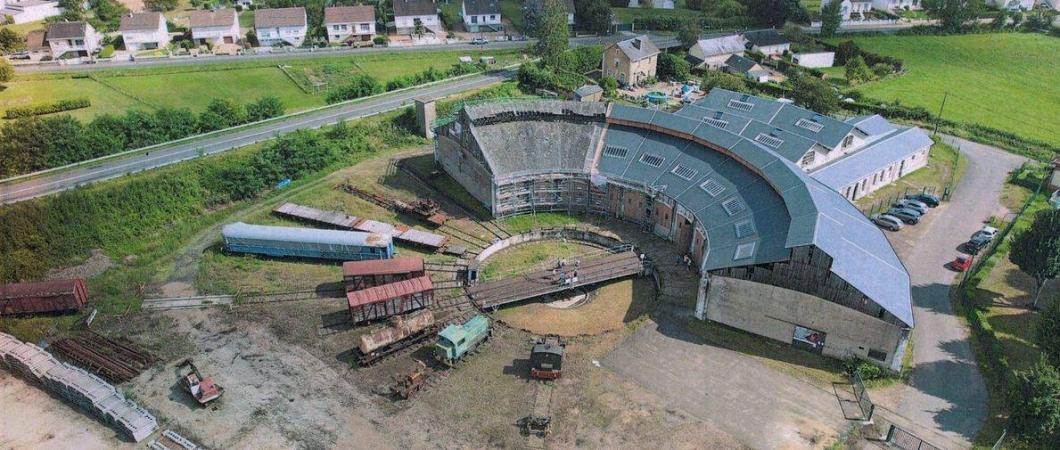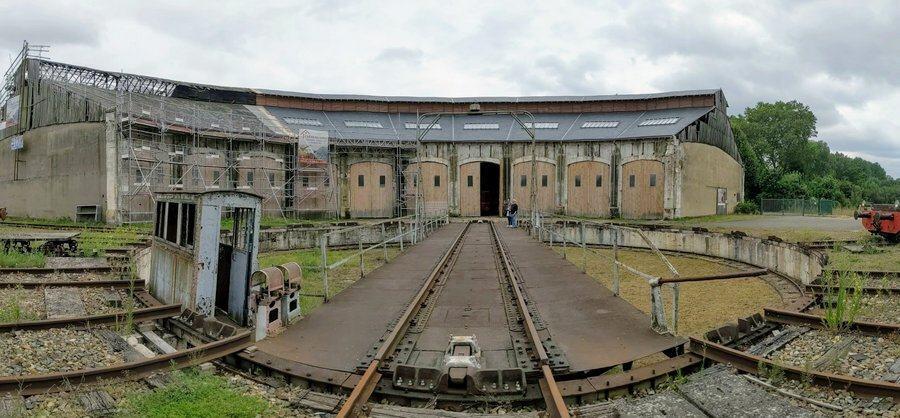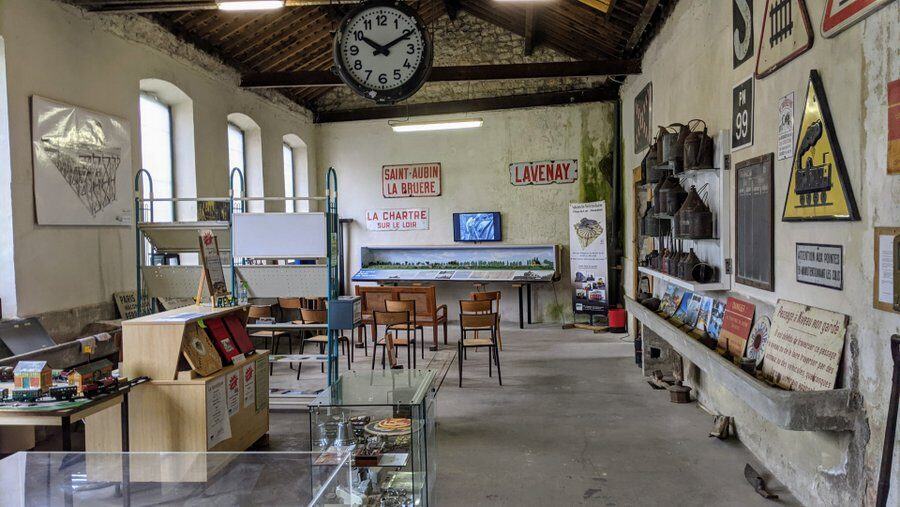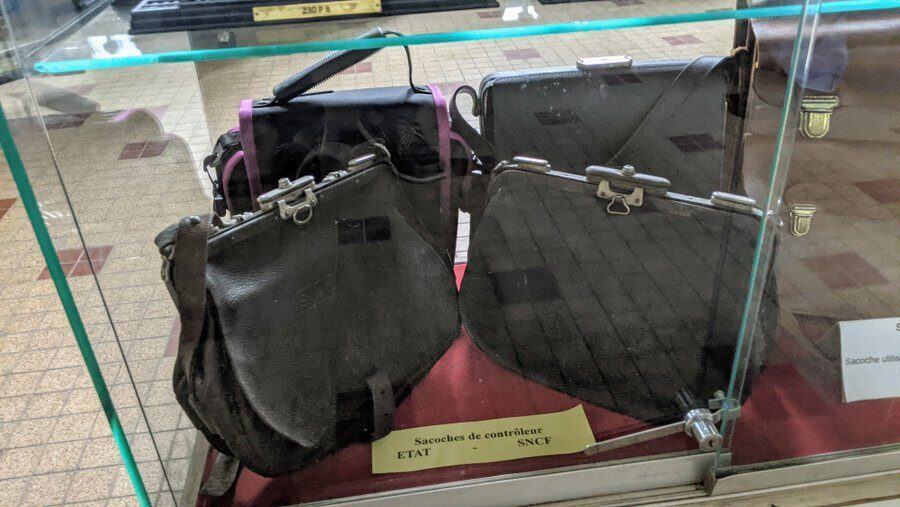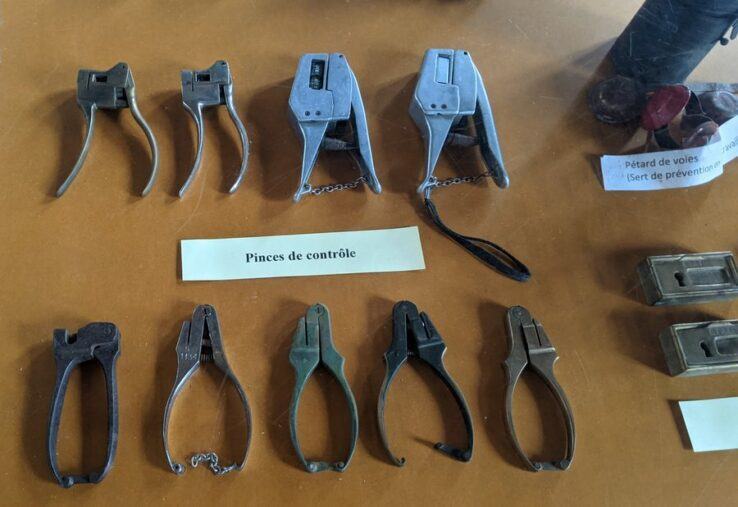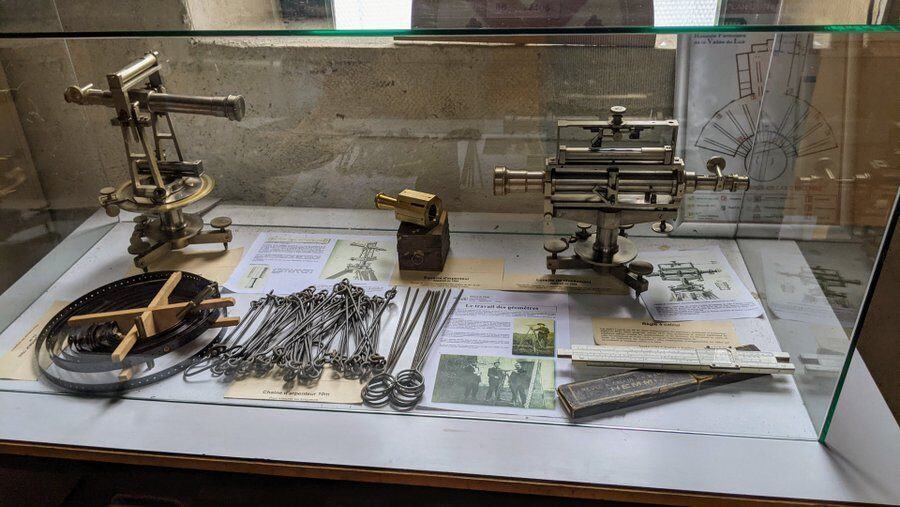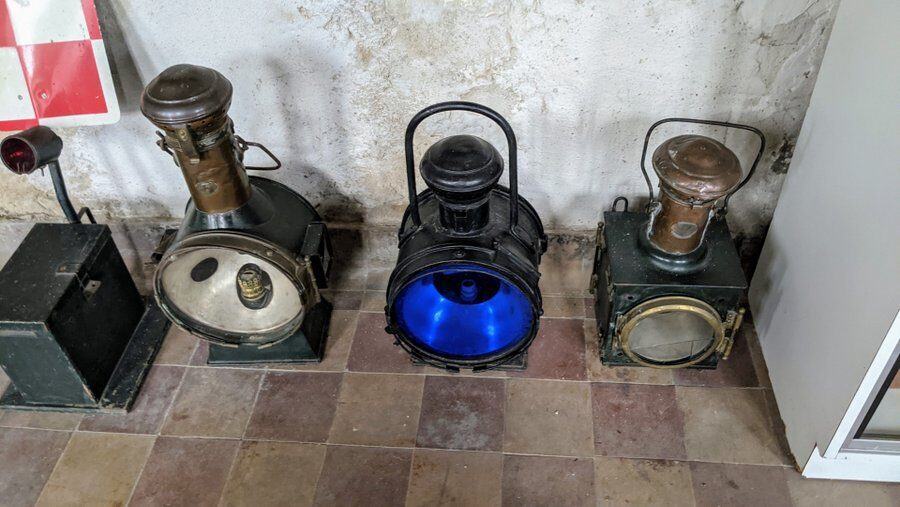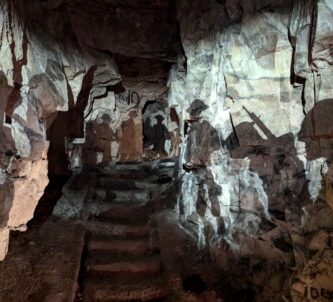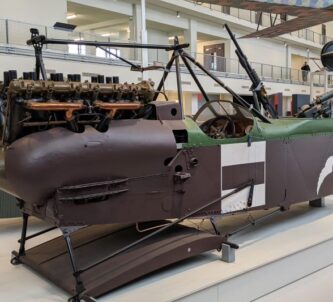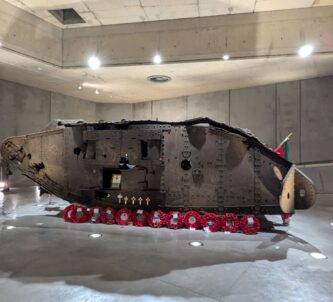The Rotonde Ferroviaire (‘railway roundhouse’) at Montabon in La Vallée du Loir* is very much a ‘work in progress’ and it is going to be fabulous in a few years.
The roundhouse and turntable were originally built in 1891 on the edge of the village of Montabon close to the the Château-du-Loir station in Sarthe, to service the main Paris to Bordeaux railway line which passes by the site a few metres away.
The History of the Roundhouse at Montabon
Railways came to this region in 1858 when the Paris-Orléans railway company built a line from Le Mans to Tours.
The small town of Château-du-Loir was a stop on this line and then became something of a hub when a further two lines were opened to Saint-Calais (1879) east of Le Mans, and Blois (1881) halfway between Tours & Orléans.
In 1886, State railways opened their Paris-Bordeaux service, routing it, rather strangely, via Château-du-Loir to compete with the more direct route operated by the Paris Orléans company.
The State railways route needed depots at regular intervals along its 583 kilometres to maintain and fuel its locomotives. In 1889 they started work on the Château-du-Loir depot, but because there wasn’t enough suitable land next to the station, they built it a short distance away in Montabon. The 2,500 m² building and its 17m turntable (upsized to 24m in 1925) were completed in 1891.
The depot could handle up to 85 locomotives at a time, and had up to 500 staff working on them in its machine repair workshop, forge, stores, and offices.

In 1938, the private railway companies were nationalised by the state to form the National Company of French Railways (SNCF). This new entity now had two lines connecting Paris to Bordeaux and quickly decided to prioritise the more direct route, allowing the longer route through Château-du-Loir to languish.
In 1944, the Allies were pounding the French rail network with bombs in order to disrupt German troop and material movements. The depot was badly damaged and part of the roundhouse roof blown in. It was repaired after the war, but the arrival of diesel traction and the rise of the automobile led to the depot’s decline, and it ceased operating in 1954.
Between 1962 and 2002 the roundhouse was used for the storage of fertilizers. SNCF planned to clear the derelict site, but in 2009 a private buyer acquired it, thus saving it from destruction.
A new lease of life for the Roundhouse at Montabon
As soon as the site was secured, a volunteer organisation, the association of the Rotonde Ferroviaire de la Vallée du Loir (RFVL) was set up to look after & restore it. In August 2010 the site was registered on the national inventory of Historic Monuments, thus protecting it for the future.
More recently, in 2018, the RFVL won the support of a heritage lottery, Mission Stéphane Bern, and a grant of 480,000 Euros**, was put to immediate use restoring the magnificent roof. The work began earlier this year and already the roundhouse is starting to look new again. The feature image above was taken in August, so you can see how far they have got.
The broad plan for the site is…
- The creation of an interpretation centre for the history and railway heritage including rolling stock.
- The organisation and/or hosting of cultural and educational events & activities.
- The restoration of locomotives, rolling stock and old railway equipment.
- The creation of a permanent museum.
Also, the roundhouse in Montabon is not the only old roundhouse in France but it is one of the only ones that has hardly been modified since it was first built and, even rarer, it still has a barely severed connection to the tracks of the national network. If the site were to be reconnected, it opens up the possibility of tourist rail traffic. It would, for example, be possible to quickly exploit a 14 kilometre section of track connecting the roundhouse down to the Chenu viaduct.
The Roundhouse now
While work continues, the RFVL are pleased to welcome visitors.
They are slowly gathering some rolling stock of interest, and in need of restoration.
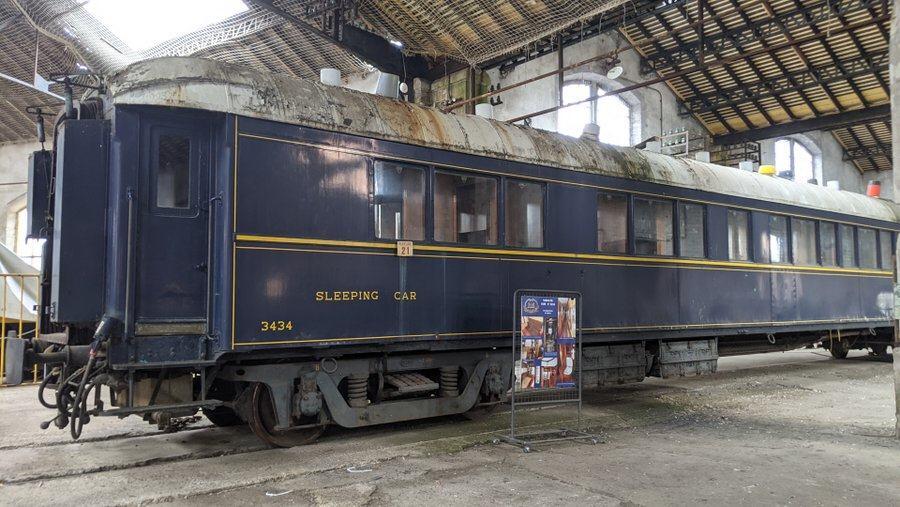
They now have two former Orient Express coaches – a dining car and a sleeping car on loan. They recently managed to find most of an old steam crane, which they’ll have to reassemble soon if it is to be useful!
The roundhouse trains include three diesel shunters (‘locotracteurs’) in various states of condition. I think the pair above are: in the foreground, , a Decauville Y 7100 class shunter (0-4-0, 150 kW diesel engines and hydraulic transmission). And behind it, a type No. 1 (1955) shunter from the Contructions d’Argent workshops. If you know better, tell me! 🙂
And this (below) I think is a Gaston Moyse locotracteur, type BN…
They also have an extraordinary petrol engine machine, the Moyse 5Ta, which I didn’t spot while I was there, but there are some images here.
The Moyse 5s were nicknamed the “horned beast” because of their look, and they were built by the Gaston Moyse company in the late 1020s/early 1930s as a ‘locotracteur’ for steelworks and foundries. They were one of the first commercial railway locomotives not driven by steam. Weighing around 5 tons, it had a 25 horsepower 4-cylinder gasoline engine and a 3-speed forward and reverse gearbox. The two axles are coupled by a chain. There are only five examples known to exist today. The one in Montabon one is chassis No. 25.
Currently, the RFVL’s pride and joy is their only steam locomotive, Léonie who arrived on loan in November 2019. Léonie is a 32 ton, type 030 T8 locomotive made by Corpet Louvet (No. 1933) in 1948 (based on plans dating from 1875). She is classified as a historic monument.
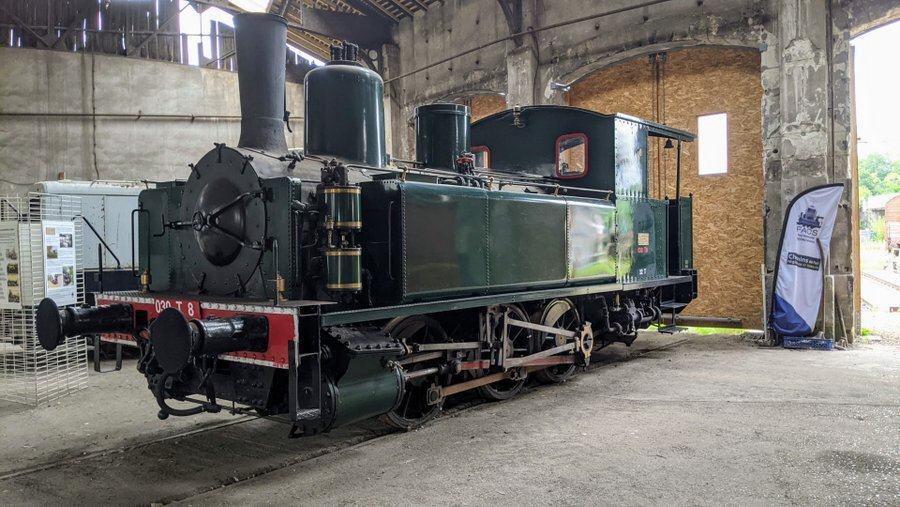
They also have a delightful BAGULEY railcar from 1917, which was used for track inspection. Only a few hundred were built. She is the only survivor.
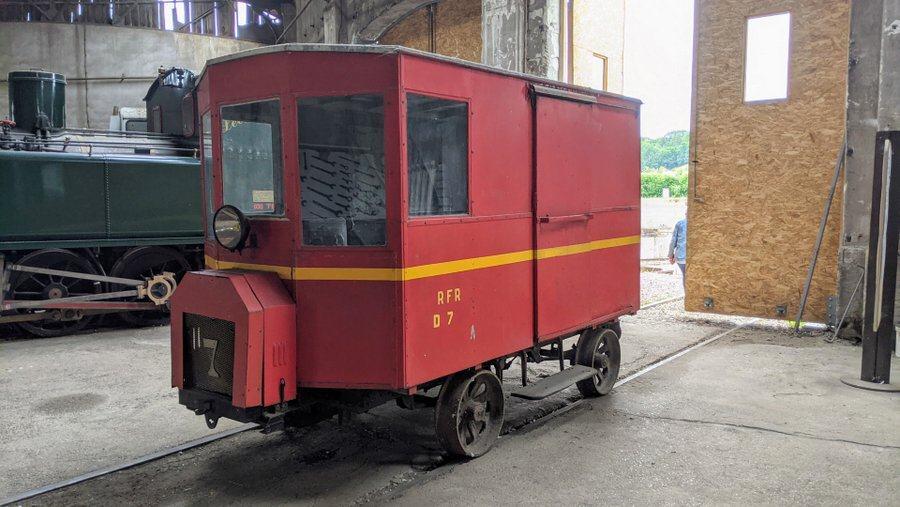
The RFVL have fitted out one of the former workshops as a museum gallery with some interesting bits of railway heritage on display, including old 19th & 20th century signage and lighting, railwaymens’ equipment (eg, train conductors satchels and ticket clippers), engineer’s theodolites & tools, etc.
At one end of the room they have set up a presentation with maps, photos, a model, and some historic B/W footage (video) about the long water trough that used to be set between the rails just outside Château-du-Loir station, where steam locomotives could scoop up gallons of water ‘en passant’.
If you are interested, you should definitely drop by. There’s very little English spoken, and no signage in English, but all these things will get better in time. The pace of repair and renovation has leapt since the recent injection of funding, and I suspect the site will become a serious tourist attraction over the next decade.
* Ok, this is going to require some geography! The French have themselves two rivers: La Loire (famous. We’ve all heard of it. It comes out at the estuary downstream of Bordeaux) and Le Loir just to the north of it in la Vallée du Loir. This is in the department of Sarthe, a circular department with Le Mans in the centre. La Vallée du Loir, whose tourism marketing strapline is, appropriately, “A Well Kept Secret”, runs east-west (parallel to La Loire) in the southern part of Sarthe. But hey, just to confuse things a little more, the department of Sarthe is at the northern end of… the administrative region of Pays de la Loire!!
** Now, with ongoing donations the total sum that has been raised is 532,720 euros, and the target to restore the whole site is 750,000 euros (Source: Heritage Foundation)
Declaration: I was on a self-driving press trip as a guest of the Vallée du Loir tourist office and heard about the project on the way.
Factbox
Website:
Association Rotonde Ferroviaire de la Vallée du Loir
Visiting:
Visits are free, but the RFVL is busy fundraising so all donations into the collection box are welcome!
Visitors are welcome on Wednesday & Saturday afternoons (1400 – 1800) and they will try to accommodate visitors at other times by arrangement. Email: rfvl@outlook.fr Tel: +33 (0)6 77 55 55 63 or +33 (0)2 43 46 55 25

